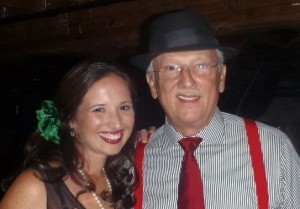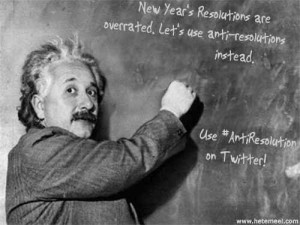“The best businesses are those that have figured out how to combine profits, passion, and purpose.” ~Tony Hsieh
It is always exciting to see when a company, of any size, decides to make a positive impact in their community – for their customers and their employees. One barrier to using cause marketing for many companies has been truly understanding how to implement a campaign and having the technology resources to make that campaign efficient. When I met Sandra Morris from CafeGive I was excited to see that the technology previously reserved for large corporations is now affordable and available for small and medium sized businesses. CafeGive is providing some ideas and recommendations for cause marketing in this e-newsletter. No matter what your passion is, how small or large your organization is, or your company goals, cause marketing can help! Learn how to get started or enhance an existing program.
Whether we call it community involvement, strategic philanthropy, cause marketing or purpose based branding – when businesses and nonprofits successfully partner — change happens. It’s good for the community, the business and its employees, and the mission of the nonprofit. Businesses are increasingly seeking nonprofits that have the ability to raise their own brands by association, as well as foster loyalty and turn stakeholders and customers into advocates.
As the nonprofit, if you are seeking funding, think about what you can do for your business partners versus what they can give you. A well-executed cause campaign that reaches your highly educated and caring clients, donors, and event participants is a new frontier for your business partner. You should leverage this asset to establish a more significant, long-term and sustainable partnership.
As a business, you give back to the community. Your unique giving story is part of what sets your brand apart. And your customers want to hear that story: At least 53 persent of consumers choose to do business with companies they believe are focused on giving to the greater good. Beyond encouraging employees to get involved in the community – or writing a check – what if you could implement a giving strategy that would directly engage your customers with your cause?
Adding social media to giving programs turns a good program into a great one by creating strong relationships and trust. If done well, social media marketing can rally employees, consumers, customers, and others around key issues they are passionate about. It can be a very effective and efficient way to increase the positive impact on a community.
Here are 6 recommendations to make your cause-related campaign impactful:
1. Keep it simple – Define a simple goal to start. Are you trying to build awareness, get people involved with an action or commitment, build your audience, or raise funds? All of these activities are valid, and each may require a slightly different approach.
2. Play to your strengths — A brand, its partners and causes all have resources, ideas, and assets. Maybe one of your partners has a great email list, or an event coming up that is a perfect place to launch a program. Use these opportunities, and the creative energy of the teams to heighten the impact of your campaign.
3. Tell a story — Storytelling connects in an authentic meaningful way. Find the story that powers the campaign and resonates with your audience.
4. Create opportunities for engagement — Consumers want to engage. Social cause marketing campaigns use voting, contests, or online donations to engage an audience. With a strong call to action, the social nature of the campaign can multiply the impact of cause campaigns.
5. Know your audience — Who are you trying to reach? What do you want from them, and what do they want from you? In a social media campaign, our messaging can engage across the business and the cause while informing you of what your audience’s expectations are and what excites them.
6. Have a plan and well-defined metrics — Campaigns succeed or fail based on your marketing plan, your goals, and your measurements. Have a plan and goals that are realistic and fit with your abilities. Track the day-to-day feedback on how your cause marketing campaign is working and make adjustments when warranted. Don’t wait until the campaign is over to reassess. Make revisions as you go!
Social media is fast becoming a marketer’s most powerful tool. So why not harness all that power for good and lift a brand by lifting your cause? Below are a few examples of current cause-related marketing programs and partnerships. Share your cause-marketing tips and insights on the Armbruster Consulting Facebook page or at www.cafegive.com
Mobile Donate App
10×10: A Campaign to Educate Girls in Developing Countries: The campaign is designed to raise money every time the trailer is shared and collect donations on mobile and the Web.
* View Mobile Donate App (view on a smartphone) (http://m.10x10act.org)
Like Us Give Back App
Using the Like Us Give Back app, Credit Union 1 Alaska is giving Alaska’s Poultry in Motion food bank $1 for every Facebook like. This campaign combined with other branch efforts build brand awareness for Credit Union 1 while at the same time provides critical financial support and awareness for the food bank.
* View Credit Union 1’s Like Us Give Back Campaign
Photo Contest
Using the Photo Contest app, CafeGive is driving community involvement and giving at the same time! To help Hurricane Sandy pet victims, CafeGive is running a pet contest and the owner of the winning pet will direct a donation to an east coast animal shelter. Please Vote!
* View #Petelect Photo Contest Campaign
Make the Match
Using the Make the Match app, Patelco Credit Union is engaging support from their community to support disaster relief and help hurricane relief efforts.
View Patelco Make the Match Campaign
About CafeGive
CafeGive combines social media apps with online fundraising apps to increase the impact of cause-related campaigns. Our set of apps and platform, CafeGive Social, helps businesses, nonprofits and marketing agencies quickly execute and measure branded social campaigns. Examples include Like Us Give Back, Contests, Social Impact Map, Giving Apps, Custom Apps and more. Visit www.cafegive.org to learn more about how we can help your cause initiative!
In the News
Armbruster Consulting Group, Inc. has been blessed with the opportunity to work with three new clients; The Andy Roddick Foundation, Make-A-Wish® Foundation, and The Reach Foundation.
The Andy Roddick Foundation works to develop and inspire underserved youth through education and sports-based mentoring, and preparing youth to succeed in the game of life. They are committed to the growth and development of tomorrow’s generation. To learn more about their mission, visit www.arfoundation.org
Make-A-Wish® Foundation has enriched the lives of children with life-threatening medical conditions through its wish granting work since 1980. World Wish Day is a celebration of the first wish, the first act of kindness that has inspired the world for over 30 years. To learn more about World Wish Day, visit www.worldwishday.org
The REACH Foundation has partnered with Martial Artist Leif Becker, “The Fastest Board Breaker” in the world, for the Breaking Barriers project. Leif will attempt to break 100,000 boards in 24 hours, each board representing barriers which face children today. Organizations, famlies, and individuals can “adopt” a board and will be given a personal “Breaking Barriers” pledge page where they can address the barrier which faces them or others in their life. The purpose of the program is to raise awareness of the barriers young people face on a daily basis and to raise money to fund programs which will assist children in breaking these barriers. To learn more about the Breaking Barriers project, visit http://thereachfoundation.org/breaking-barriers


